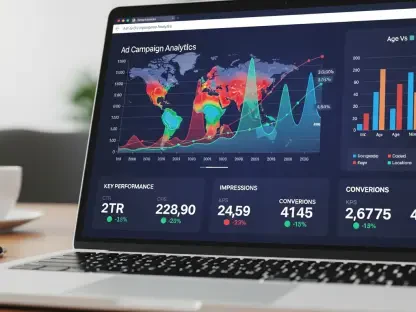In today’s data-centric world, proficiency in marketing reporting is essential. It’s not just for CMOs; every member of the marketing team must be able to track performance, prove value, and guide future strategies. These reports serve as a crucial navigation tool, helping businesses traverse the digital terrain, pinpoint improvement opportunities, and acknowledge achievements.So, how does one excel at crafting these pivotal marketing reports? Firstly, it’s about knowing what data to gather – this includes website traffic, conversion rates, social media engagement, and ROI metrics. Next, deploying the right tools and software for data visualization can transform raw data into readable insights. Furthermore, understanding the target audience for these reports is vital; executives might prefer high-level summaries, while teams may require detailed analytics.Effective marketing reports are therefore not just a collection of numbers – they are a strategic asset. By interweaving technical data with a narrative that highlights key trends and results, these reports provide clear guidance for decision-makers. To build a solid report, one must be thorough yet concise, presenting the most relevant information in an accessible and actionable format. As businesses continue to evolve in a digital-first landscape, the ability to deliver incisive marketing reports is no longer just beneficial – it’s imperative.
Opting for the Right Template
Before diving into the ocean of marketing data, it’s crucial to find a solid platform. This begins with selecting a suitable template that caters to your specific marketing reporting needs. A template acts as a framework that brings structure to your KPIs and highlights the critical metrics that align with your business goals and strategies. With a variety of reporting templates available, you can choose one that best represents your marketing channel’s complexities and successes. Whether you’re focusing on web analytics, social media engagement, or overall digital marketing performance, the right template can simplify how you interpret and present your data.
Establishing a Connection with Google Analytics
After setting up your reporting template, the crucial next phase is establishing a link between your data source and the reporting tool—the lifeline for a digital marketer’s analytics. Google Analytics stands as a cornerstone tool providing deep insights into the user experience, acquisition pathways, and website performance metrics. The process to synchronize Google Analytics with a reporting tool like Databox is uncomplicated but essential. By connecting your Google Analytics account with Databox, you ensure consistent and automated data transfer. This synergy is fundamental not only for monitoring metrics as they happen but also for an accurate and timely representation of the impact and success of your marketing strategies.Real-time data update is a significant advantage as it allows for prompt decision-making and strategy adjustments. The amalgamation of data from Google Analytics into a centralized dashboard such as Databox empowers marketers to track vital KPIs and get a comprehensive overview without the hassle of manual data extraction. The result is an efficient reporting workflow that provides a dynamic narrative of your digital marketing journey to all stakeholders involved. Thus, integrating these tools is a pivotal step in elevating your marketing analytics and maintaining a competitive edge in the digital landscape.
Watching Your Dashboard Come to Life
The final step in the process—observing your marketing dashboard come to life—is the most gratifying. As your data starts to populate the dashboard, you’ll see your metrics and KPIs take shape in an easily digestible format. Watch as your sessions, conversion rates, and traffic sources transform into visual graphs and charts. This is where the abstract becomes tangible, and data points become actionable insights. In a matter of seconds, what once may have seemed like an overwhelming cluster of numbers becomes a clear depiction of your marketing efforts’ impact.Through these steps, marketing reporting transitions from a daunting task to an empowering instrument in your marketing toolkit. As we delve deeper, we’ll explore the essential KPIs and metrics that should be staple in your reporting, the nuances of daily, weekly, and annual reports, and how to discern output from outcome for robust analysis. Stay tuned as we unravel the art and science of marketing reporting.









